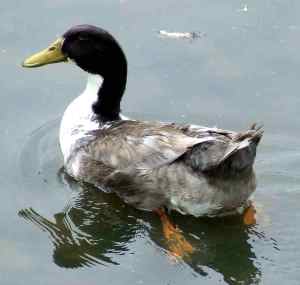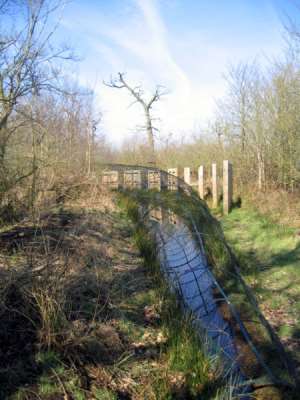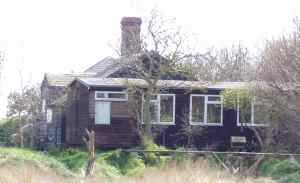Wildfowling
|
Wild fowling represented a major part of the economy of the region given the large number of ducks that either lived or wintered in the marshland on the estuary. The main season ran from October to March
Many breeds of wildfowl were killed although the main species breeds were Mallard, Widgeon,Teal, Oyster Catcher, Sheldrake, Shoveller ,Greenshank, Dunlin and Brent Geese. While wildfowl featured in the local stews a great deal it also represented a valuable business.The two main methods of wild fowling were Decoy Ponds and Punt gunning. The general season for catching wildfowl was from the end of October to February. To take or driveaway any wild-duck, teal, widgeon,or other water-fowl in the moulting-season, between the 1st of June and the first of October,was punishable with a fine of five shillings, to be levied by distress; in default to be imprisoned, whipped, and kept to hard labour.Decoy Ponds Essex was home of amongst the best known decoy ponds in the country and were one of the foremost sources of wildfowl's for London's markets. The first official recording of decoy ponds were in the 1200's but they are believed to have been in existence well before this date. A decoy pond is a shallow pond usually quite small with several ditches extending in star shape from the pond. The ditches narrow as they leave the pond and have a hoops with a net cover erected over the ditch. As the ditch narrows so the net cover lowers until it reaches ground level as the ditch ends.
Alongside each ditch a high reed screen is erected so that a man or animal can pass without being seen by ducks on the pond. Similar screens are erected around the pond with a few lower screens allowing later access. When several ducks are in the ditch the Decoy man and often his dog move into the mouth of the ditch cutting of the retreat and the ducks fly along the netting and eventually are able to be captured at the end of the tube. Dogs used by Decoy men are tradionally small mid brown dogs that have the appearance of foxes which helps to scare the birds. By 1900 virtually all of the decoys has stopped working partly due to a considerable lessening of numbers and partly due to more efficient guns replacing the decoy ponds. Decoy ponds were found in great number in this area Bradwell on Sea - East HallBradwell on Sea - Glebeland Bradwell on Sea - Marsh House Farm Bradwell on Sea - Westwick Latchingdon St Lawrence - Ramsey Decoy Steeple - Canney Decoy Tillingham - Grange decoy A dictionary of sports written in 1835 by Harry Harewood remarked that in 1795, the Tillingham decoy in Essex netted, after every expense, upwards of eight hundred pounds ; and in 1799, ten thousand head of widgeon, teal, and wild-ducks were caught in a decoy of the Rev. Bate Dudley In his 1904 book The Little Guide to Essex J C Cox gives a picture of the wild fowling and other birds .The Seaboard of Essex with its extensive salting's covered only occasionally by the highest tide, its considerable mud flats left regularly uncovered at low water and the grass covered marshes definitely recovered from the sea form favourable feeding grounds and breeding haunts for both waders and web footed birds. Wildfowl are still numerous though a mere fraction of the myriads which formerly abounded. The sites of thirty five old decoys have been identified. Of these only two are now regularly worked, namely those of Grange and Marsh House both in Tillingham parish. The Brent goose that formerly appeared off this coast in almost fabulous numbers, and is still numerous in severe weather. The magpie is almost extinct although the Jay remains fairly common. The Starling is rapidly increasing. The only gull that breeds in the county and that in small and diminishing numbers is the black headed gull known locally as the peewit gull. Punt Gunners Punt gunners operated in the winter months when the wild fowl were at their most numerous and while they were not breeding.
Punts were narrow open wooden boats of 10 to 15 feet long. A large punt gun which could be up to 8 feet long was fixed at the front of the punt. The gun was fitted with a 3/4 pound charge and packed with up to 900 shot The punt gunner laid face down in the craft with his face immediately behind the gun barrel and paddles the punt with small paddles. When he found a group of birds he paddles the punt so that it's bows faced the centre of the birds and the fire the gun. The spread of shot would move over a wide distance and could kill many ducks with one shot. Once the ducks were shot the pun gunner picked the ducks from the water and stored them in the punt . The best known local punt gunner was Walter Linnet who lived in a cottage next to St Peters Chapel on a very lonely stretch of coastline which was a favourite landing ground for wildfowl.
In 1904 Herbert W Tompkins wrote a fascinating book called Marsh-Country Rambles during which he talked to punt gunners and records the following stories "Mr Mussett was with a party of 34 puntgunners at a favourite wildfowl feeding spot near to St Peters Chapel at Bradwell on Sea.. An immense number of geese had alighted. They succeeded in getting within range without alarming the birds; the 34 punts returned with nearly 900 geese."This was by no means unusual as the journal records that Harry Handley of Maldon shooting in Stansgate Bay killed 432 Dunlins with one shot Mr Mussett recalled bagging 57 red-headed dunbirds at one shot John Basham of Maldon shooting off Bradwell on Sea killed 108 at one discharge Mr Fitch killed 75 Wigeon with one shot 32 pun gunners killed 704 birds 18 Punt Gunners killed 360 wild geese |







